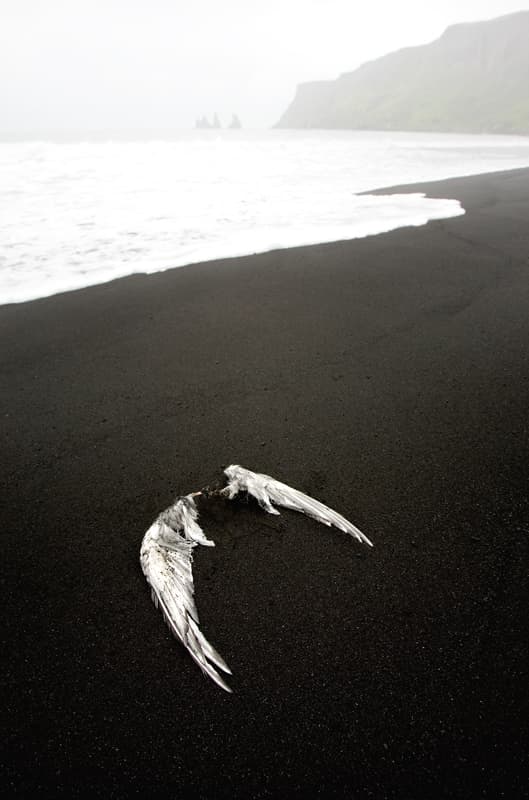 Jim Brandenburg travelled the world as a photographer with National Geographic magazine for more than 30 years. His work has been published in The New York Times, Life and Time, among others, and he has won numerous awards, including Kodak Wildlife Photographer of the Year by the Natural History Museum and BBC Wildlife Magazine. He is the chair of this year’s competition. Every month Jim will share the story behind one of his nature images
Jim Brandenburg travelled the world as a photographer with National Geographic magazine for more than 30 years. His work has been published in The New York Times, Life and Time, among others, and he has won numerous awards, including Kodak Wildlife Photographer of the Year by the Natural History Museum and BBC Wildlife Magazine. He is the chair of this year’s competition. Every month Jim will share the story behind one of his nature images
I stumbled upon this scene when I was teaching a workshop in Iceland. I was supposed to be tutoring a busload of doctors and lawyers, but as they weren’t interested I found that I had a lot of free time to take my own photographs.
On the day in question I found myself on Sandvík beach. It is famous throughout the world because of the colour of the sand, which is almost completely black. On that day it was complemented by some pretty extreme weather in the form of very heavy fog. The combination of the two meant that I was presented with a scene almost devoid of colour – there was nothing really other than the grey fog and the black sand.
This makes for one of the most intriguing things about this image: it is shot in colour, not in black & white, as the vast majority of people assume. You can see why people make the mistake as there is very little to suggest that it is not a black & white image, but if you look closely there is the faintest hint of green in the hills in the distance that gives it away.
The fog is the most crucial element of this photograph, as it would not have worked at all had it been a clear, sunny day. I love to shoot in fog and, despite what some people may say, it’s really not that challenging. In fact, it is very easy to shoot in fog as it lowers the contrast, and that is what gives the stripped-back colour of the picture.
I don’t remember the physical process of shooting this image. I was walking along the beach in the afternoon and hardly remember composing the image or taking it. I just shot a couple of frames using my Canon EOS-1Ds with an extreme wideangle lens of 14mm and then moved on. Having shot a lot of photographs over the years, I find that I start looking for composition instinctively. I always think it’s best to go with your instinct and shoot from your heart. If you labour over an image, you will lose the authentic rhythm and naturalness that comes from shooting instinctively.
As a result, it’s always afterwards that I realise how and why an image works for me. At the time I am not conscious of calculating composition and subject matter, but in retrospect I can see how those decisions have made the picture what it is.

With this particular image there are many patterns and shapes being repeated throughout the frame that make the photograph intriguing. There are pointed shapes that are reflected throughout the foreground and in the background. The pointy islands in the distance refer back to the shapes seen in the points of the bird’s wings, while the spit of sand on the beach turns into a little point that references the same shape of the wings. There are a lot of pointed shapes that somehow hold everything together. A number of these reference mirrors keep repeating themselves, and I think that’s probably one of the reasons that it works for me.
One thing I do remember when taking this photograph was that I was completely alone – there was no one else in the vicinity. I was just exploring the area, completely drawn to the striking combination of the black sand and the fog. Finding the bird wings already in situ added the element I needed to put a little bit of edge on the image, both visually and emotionally. Without the wings it would have been a very so-so picture. Having the wings in the photograph adds an extra element and provides some context: quite simply, it shows death in nature in an elegant way. With nature photography, we tend to be drawn to photographing the positive and beautiful side of nature, but there’s also the other side – death and sadness. This scene shows perfectly death in nature
in a very simple and graceful manner.
I performed a few minor tweaks to the picture in Photoshop, playing around slightly with the contrast. I did a spot of burning and dodging to get the tonal relationship right so the contrast wasn’t out of balance. I also sharpened the image a little, just to make the sand sparkle a bit more. It didn’t take much work.
You can get much more lyrical results when you are shooting digitally, as I did with this image. You just don’t have to think as much, and can shoot away and move on to the next scene that captures your eye. If you can shoot something straight off, it has a beautiful indescribable naturalness.
Jim Brandenburg was talking to Jade Lord
To see more of Jim’s images, visit his website at www.jimbrandenburg.com








